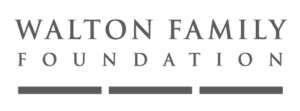A new report shows Northwest Arkansas experienced some its best numbers when it came to the number of businesses established in the region.

Ross DeVol, a fellow at the Walton Family Foundation, talked Tuesday at the State of the Northwest Arkansas Region luncheon about how important universities are to the overall health of a region’s economy.
The 2018 State of the Northwest Arkansas Region Report showed the region added 1,364 businesses from 2012 to 2017, an annual increase of about 2.2 percent. There are more than 13,000 businesses in Northwest Arkansas.
The report, which was made public on Tuesday at a luncheon in Lowell, is published as a partnership of the University of Arkansas’ Center for Business and Economic Research and the Northwest Arkansas Council. In addition to business establishments, the report shows the metropolitan area is improving in categories such as household median income, educational attainment, annual wages and job creation.
The annual report is used to benchmark economic performance against fast-growing peer regions such as Austin, Des Moines, Raleigh, and Madison. It’s been published since 2011.
“Several metrics that the region cares about showed significant improvement, namely the business establishment growth rate and the household median income,” said Mervin Jebaraj, the director of the business and economic research center’s director. “The region has worked hard to coordinate and cultivate resources for entrepreneurs such as the Arkansas Small Business and Technology Development Center, the Arkansas Research and Technology Park, the Brewer Entrepreneurship Hub, the McMillon Innovation Studio, Startup Junkie, and Grit Studios. The investment has already begun to show results which can only multiply with the renewed commitment to research commercialization at the University of Arkansas.”
Jebaraj said the region’s job growth, which included a significant number of better-paying jobs, boosted the median household income to $56,038 in 2017, according to the U.S. Census Bureau. Northwest Arkansas will need to continue seeing an uptick in businesses being established and in median household income to keep pace with peer regions, Jebaraj said.
The report shows a top area of concern is the region’s high cost of flying. The average domestic fare at the Northwest Arkansas Regional Airport was $538 roundtrip in 2017. Four of Northwest Arkansas’ peers have fares below $380.
The Greater Northwest Arkansas Development Strategy, a plan unveiled by the Northwest Arkansas Council in July, includes goals and objectives intended to address the region’s areas of weakness and take advantage of its best opportunities. For example, the plan includes a goal of working with the University of Arkansas to double the amount of research and development expenditures that occur, and there’s a goal of luring a low-cost carrier to provide daily service at the regional airport.
Additionally, the plan includes providing support to entrepreneurship programs, advancing healthcare and working to recruit talent to the region.
Report Highlights
Metropolitan GDP – Real metropolitan gross domestic product in Northwest Arkansas grew 3.4 percent from 2016 to 2017. The growth was higher over a five-year period (4.9 percent annually). The average GDP growth in peer regions was 4 percent.
Employment– Employment in Northwest Arkansas grew 3.1 percent in the most recent year, faster than most peer regions. The rate was slower than the five-year average of 3.9 percent.
Unemployment– Northwest Arkansas continues to be among the nation’s top performers when it comes to keeping its unemployment rate low. Its 2.8 percent rate in 2017 wasn’t as good as Madison’s 2.5 percent, but it was lower than every other peer.
Median Household Income – Northwest Arkansas’ median household income increased to $56,038 in 2017, up significantly from the $47,905 figure of 2013. However, five of the six peer regions have incomes that exceed $65,000 annually. Austin had the highest ($73,800).
Annual Wages – Average annual wages in Northwest Arkansas have been consistently lower than in peer regions and the nation as a whole. It’s worth noting that Northwest Arkansas’ cost of living is less than most peer regions.
Educational Attainment – The percentage of Northwest Arkansas residents age 25 or older with a bachelor’s degree or higher continues to increase. It reached 30.8 percent in 2016, and it rose to 31.8 percent in 2017. Yet, Northwest Arkansas still lags behind its peers. At least 36.6 percent of residents in all peer regions have earned a bachelor’s degrees or higher.
Pictured at the top: Mervin Jebaraj, the director of the University of Arkansas’ Center for Business and Economic Research, presented the State of the Northwest Arkansas Region Report during a Tuesday luncheon in Lowell.























